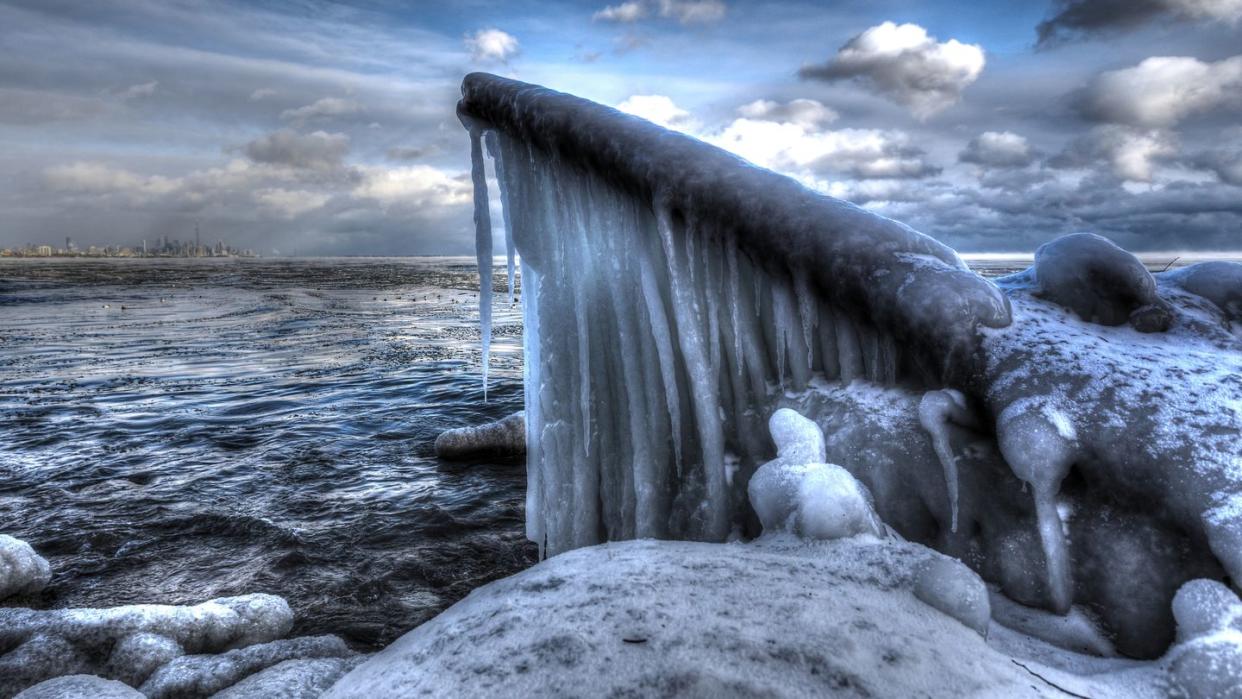The Polar Vortex Is Suddenly Swirling Backwards

The polar vortex rages in the arctic during the winter, producing winds up to 150 miles per hour. But when that vortex weakens, arctic air escapes to more southerly latitudes, which creates ultra-frigid conditions.
According to NOAA, the polar vortex is currently spinning backwards due to atmospheric planetary waves creating a “sudden stratospheric warming” event.
Spinning backwards isn’t entirely uncommon, and thankfully this clockwise rotation won’t send arctic winds across North America.
It’s a term that sends chills down the spine (quite literally) of anyone living in the midwest and northeastern U.S.: polar vortex.
This large mass of cold air and low pressure usually spins around the arctic, ebbing and flowing throughout the seasons, getting strong in the winter, and fading away in the summer. Stretching some 30 miles into the stratosphere with winds that can reach up to 150 mph—about as fast as catastrophic hurricanes—this gargantuan, counterclockwise-spinning tornado of arctic air can have very real consequences for humans in northern latitudes.
That’s because when the vortex is strong and stable, it contains cold air to the arctic (which is, preferably, where you want it). But when the vortex weakens, that cold arctic air can escape into lower latitudes. That’s why the term “polar vortex” became particularly popular in the winter of 2014 during one of these intense cold snaps (though, these atmospheric dynamics have been around loooong before then).
So, if these are the extremes that can happen when a polar vortex strengthens and weakens, what happens when it reverses course entirely? Well, we may be finding out as we speak. According to a report by Spaceweather.com, National Oceanic and Atmospheric Administration (NOAA) experts have confirmed that, since March 4th, the polar vortex has been flowing in the opposite direction—a weather phenomenon that isn’t as uncommon as you might think. In fact, in January, the polar vortex also reversed course briefly. However, this reversal has been particularly noteworthy.
“It was a substantial reversal, reaching -20.5 m/s a few days ago, which puts it in the top 6 strongest such events since 1979,” NOAA’s Amy Butler, the author of the agency’s Polar Vortex blog, told Spaceweather.com. “Atmospheric planetary waves have been breaking in the polar stratosphere, increasing its temperature… we call this a ‘Sudden Stratospheric Warming’ (SSW) event, and it can cause the vortex to change direction.”
First, some meteorology 101. Planetary waves, also known as atmospheric Rossby waves, occur when air arrives in an area of differing density, but is forced downward by the Earth’s spin. According to the National Weather Service, these waves break (not unlike ocean waves) on top of the polar vortex, which weakens its intensity. This leads to an SSW, as the stratosphere heats up as much as 90 degrees Fahrenheit in just a couple days. The current El Niño climate pattern can also lead to a weaker polar vortex as it changes the temperature of the Pacific ocean.
While a vortex reversal can bring cold weather, thankfully, this particular SSW isn’t going to wreak havoc on North America. However, it is speeding up the spread of ozone from the tropics to the poles. That’s creating an increase of ozone in the arctic region, which Live Science explains is a sort of reverse ozone hole. While vortex reversals can last anywhere from a few days to months, Butler states that winds will likely begin blowing westerly in 10 days, and ozone levels will subsequently return to normal.
Just in time for the vortex to slowly fade away amidst the Sun’s summer rays. But don’t breathe easy—the vortex will return.
You Might Also Like

 Yahoo Movies
Yahoo Movies 
